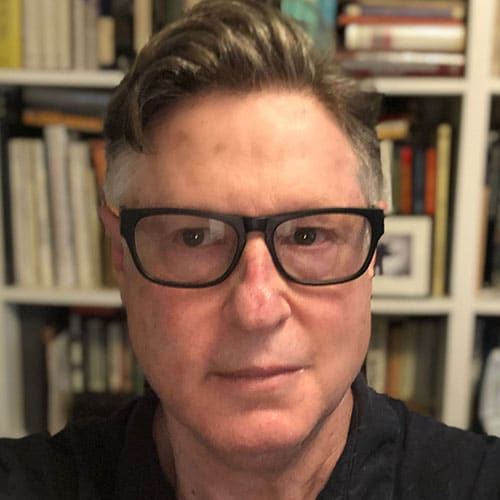By this point in the summer, I know that my devoted Tommywood readers are all wondering the same thing — be they sitting by the pool at the Sociéte des Bains de Mer in Monte Carlo, on their yachts sailing off the coast of Turkey or schvitzing in their New York apartments or Los Angeles homes.
They all want to know: How is he going to come up with another column about Hungarians?
Frankly I was wondering the same, until I got the most wonderful e-mail. No, not the one about a “very important business proposition for you†from my Nigerian friend, but an invitation to a portrait exhibit of Hungarian Nobel laureates being held at the Scenic Drive Gallery in Monrovia.
Faster than you can say Yoy Istenem (Oh my God), I loaded up the family — wife, daughter, mother-in-law — and headed for the hills of Monrovia.
Hollywood-centric as I am, I initially thought Monrovia was where “Duck Soup†took place, but it turns out to be a small community not far from Pasadena.
The Scenic Drive Gallery is the home and studio of successful Hungarian-born artist Susan Dobay, who decided, in her words, “to give back†by turning part of her home into a gallery that hosts quarterly exhibits. (Go online to see the gallery and Dobay’s work at home.earthlink.net/~sedobay/index.html).
We knew we were getting close when I spotted a small blonde woman with large teased hair, impeccably dressed, wearing glittering jewelry, looking completely out of place in the summer heat, ascending the driveway of a deceptively typical ranch home.
Inside we found quite a crowd. Dr. Odon Kiraly, the trade commissioner of the Hungarian Consulate for Los Angeles was there, as well as Ferenc Bosenbacher, the consul general in Los Angeles of the Hungarian Republic.
All around me were many Los Angeles-based Hungarians (or “Hunkies†as I am wont to call them) of the old or older variety. Surrounding them were Hungarian painter Attila Boros’ portraits of Nobel Prize winners of Hungarian birth or descent.
Although Boros himself could not make the exhibit, his paintings each conveyed a great amount of personality. Boros’ portraits combine photographic precision of their subjects’ faces, while using the background to paint a subjective interpretation of each Nobel winner’s genius.
So who are some of these Nobel Prize winners?
Elie Wiesel, who won the 1986 Peace Prize, was born in Sighet, Transylvania. Budapest-born Imre Kertesz, who won the 2002 Prize in literature, may be familiar to readers of this column for “Fateless,†his 1975 novel. Economist Milton Friedman, of the famous Chicago School of Economics, who was born in Brooklyn to Hungarian parents, is a 1976 winner.
John Haransyi, who as a Hungarian Jew spent part of World War II in a forced labor camp, may not be a household name, but he shared his 1994 mathematics Nobel with John Nash of “A Beautiful Mind†fame. Eugene Wigner, the founder of nuclear engineering, responsible for the Manhattan Project idea was a 1962 winner (he also shared the Atoms for Peace award with fellow Hungarian Leo Szilard); Dennis Gabor, received a Nobel in 1971 for developing holography.
And there was my personal favorite, Albert Szent-Gyorgy. In my home, you see, when we talked about taking your Vitamin C, we didn’t mention Linus Pauling. Instead we referenced Szent-Gyorgy, who received his prize for his pioneering work isolating Vitamin C.
And where did he find it?
As every Hungarian child knows, in paprika, of course.
This exhibit originated at the Koncz Gallery in Debrecen, Hungary. The gallery owner, Sandor Koncz, was present at the Monrovia event, and it’s worth mentioning that the Koncz Gallery has, over the years, made it a mission to exhibit the art of Hungarian survivors of the Holocaust. The exhibition comes to Los Angeles from New York’s Weinstein Gallery, which is operated by the Bnai Zion Foundation.
So, how is it that so many Hungarians, and so many Hungarian Jews, were able to express the mysteries of the universe in so many novel and Nobel ways?
My family members pondered this after the exhibition, during our salutary and gustatory stop in Pasadena at Pie ‘n Burger (Pie ’n Burger is to In-N-Out as The Apple Pan is to Johnny Rockets — that is to say the authentic original, standing as an ideal, in the platonic shadow of a more successful chain of clones).
Perhaps to be a Hungarian Jew means to improvise — sometime to survive, sometimes to advance. And this ability — or necessity — to negotiate between culture and society, or between science and culture, has enabled these mainstream outsiders to climb towards and beyond the middle class. To innovate, to invent, to change the world.
Who knows? Perhaps they will one day discover some faulty gene that lies at the heart of this record of achievement. I wish I could figure it out — because the Hungarian who does will probably win a Nobel.
Tom Teicholz is a film producer in Los Angeles. Everywhere else, he’s an author and journalist who has written for The New York Times Sunday Magazine, Interview and The Forward. His column appears every other week.























 More news and opinions than at a Shabbat dinner, right in your inbox.
More news and opinions than at a Shabbat dinner, right in your inbox.